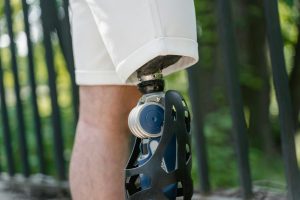The Evolution of Automotive Braking Systems
The evolution of automotive braking systems has been a fascinating journey, with advancements and innovations constantly pushing the boundaries of safety and performance. From the earliest horse-drawn carriages to the modern, high-tech cars of today, braking systems have undergone significant transformations to keep up with the ever-changing demands of drivers and vehicles. In this article, we will explore the fascinating history and development of automotive braking systems, from their humble beginnings to the advanced systems we rely on today.
The Early Days of Braking Systems
The very first horse-drawn carriages did not have dedicated braking systems. Instead, they relied on the driver pulling on reins to slow down or stop the carriage. However, this was a far cry from the efficient braking systems we know today, and accidents were commonplace. It wasn’t until the mid-1800s that the first true braking system was invented by a French carriage maker named Louis Renault. These early systems were rudimentary but marked the beginning of braking technology in the automotive industry.
As cars began to replace horse-drawn carriages, engineers turned their focus towards developing more advanced braking systems. In the early 1900s, the internal combustion engine was gaining popularity, and cars were becoming faster and more powerful. This led to the need for more efficient and reliable braking systems, and drum brakes were introduced. These brakes featured a drum-shaped housing that contained brake shoes that would expand outwards to create friction and slow down the wheels when needed. This was a significant improvement over the simple hand brake mechanism used in early cars.
The Introduction of Hydraulic Brakes
In the 1920s, the automotive industry witnessed a significant breakthrough in braking technology with the introduction of hydraulic brakes. This new system used fluid-filled tubes to transmit force from the brake pedal to the brake shoes, resulting in more consistent and powerful braking. This advancement not only improved safety but also allowed for more precise control over the car’s speed.
The 1950s saw the rise of disc brakes, which quickly became the standard for high-performance cars. Disc brakes work by pressing brake pads against a rotating disc, creating friction that slows down the wheels. This design allowed for better heat dissipation, resulting in more effective braking and reducing the risk of brake failure. Additionally, disc brakes are less prone to the infamous “brake fade” that was common with drum brakes.
Electronic Braking Systems
In the late 1970s, electronic braking systems (EBS) began to make their way into the automotive industry. These systems utilize sensors, computer processors, and hydraulic actuators to provide more precise braking, making them ideal for modern cars with advanced safety features. With EBS, the system can quickly and accurately adjust braking force to each wheel, providing optimal control and response in emergency situations.
Another significant advancement in braking technology came in the form of regenerative braking – a feature found in many hybrid and electric cars. This system uses the car’s kinetic energy to recharge the battery while slowing down. As the car decelerates, the electric motor generates electricity, which is then fed back into the battery, effectively converting motion into energy. This technology not only improves the car’s efficiency but also extends the lifespan of the brake pads.
The Future of Braking Systems
As cars become more advanced and autonomous driving becomes a reality, the braking systems of the future will see even more dramatic changes. Many automotive manufacturers are experimenting with alternative materials such as carbon ceramic and aluminum alloy for braking components, as well as integrating smart braking systems that use artificial intelligence and advanced sensors to predict and prevent potential accidents.
Additionally, with the rise of electric and autonomous cars, traditional braking systems may no longer be necessary. Many electric cars already have regenerative braking systems that can be used for nearly all deceleration, eliminating the need for traditional brakes entirely. As we continue to push the boundaries of technology, we can expect to see even more advancements in the field of automotive braking systems.
Conclusion
The evolution of automotive braking systems has been a showcase of ingenuity and progress. From the basic hand brake of the early days to the advanced electronic and regenerative braking systems of today, safety and performance have always been at the forefront of development. As we look to the future, it’s exciting to think about what new innovations will shape the braking systems of tomorrow for safer and more efficient driving experiences.










